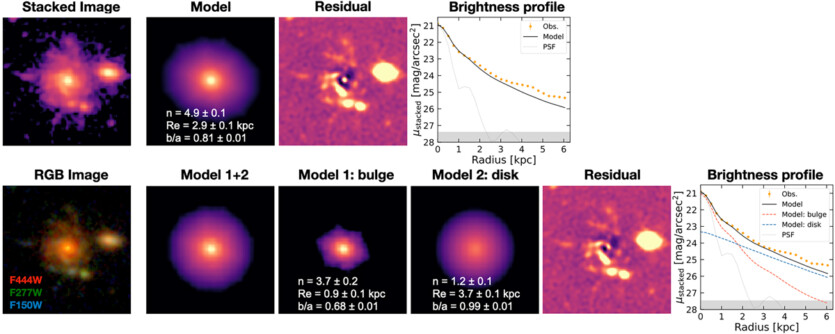
Astronomers have discovered the oldest and most distant spiral galaxy, very similar to our own Milky Way, using the «James Webb» telescope.
The images taken by Webb captured light emitted just a billion years after the Big Bang. The galaxy, called «Zhulong», after the dragon from chinese mythology, appears fully formed with two spiral arms, star formation regions, and central clumps where older stars are located.
Astrophysicists have already called Zhulong the most distant and oldest twin of the Milky Way. It was believed that the formation of such large galaxies takes many billions of years, but Zhulong seems to be shattering these notions.
«What makes Zhulong stand out is how similar it is to the Milky Way — in terms of shape, size, and stellar mass It was previously thought that galaxies like ours would take billions of years to form distinct elements such as spiral arms, huge star-forming disks, and central bulges that are densely filled with stars», — emphasizes the team leader of the astronomers from the University of Geneva Mengyuan Xiao.
Star formation disk Zhulong is approximately 60 thousand light years wide. The stellar mass of this galaxy is 100 billion times that of the Sun. At the same time, the Milky Way disk is about 100 thousand light-years wide. The total mass of the stars in our galaxy is about 1.5 trillion solar masses.

Zhulong — is currently the largest known twin of the Milky Way discovered at such an early period in the history of the Universe. It formed more than a billion years earlier than the spiral galaxy of similar shape Ceers-2112, which JWST discovered in 2023 at a distance of about 11.7 billion light-years from Earth.
Find Zhulong astronomers managed to use the PANORAMIC — mode to view billions of distant objects in a wide-angle view. This allows James Webb to simultaneously use an infrared spectrograph and a camera near infrared range to observe two different areas of space.
Telescope observations of the early Universe consistently show that objects are there, including giant galaxies and supermassive black holes seem to have grown too large and too fast for our best current theories to explain. The researchers plan to conduct additional observations with the James Webb and the — telescope in the Chilean Atacama Desert to better study the most distant known twin of the Milky Way.
The results of the study were published in the journal Astronomy & Astrophysics
Source: LiveScience

Spelling error report
The following text will be sent to our editors: